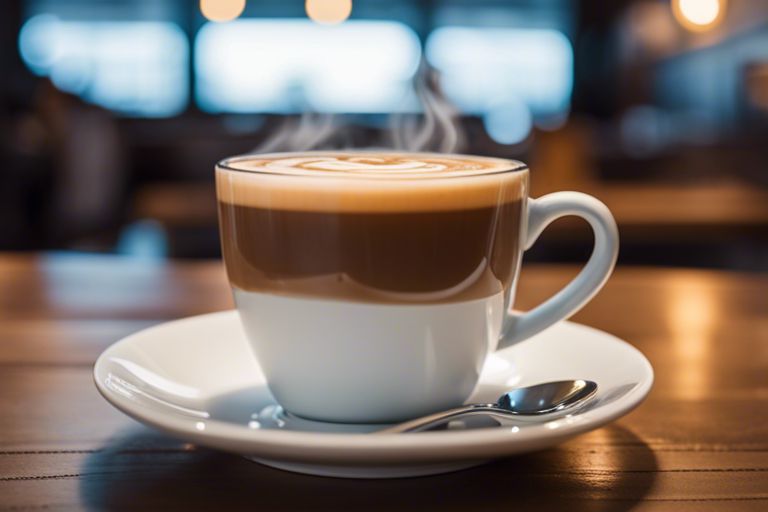Exploring the rising trend of white coffee, a must-try for coffee enthusiasts, unveils a world of unique flavors and benefits that set it apart from traditional dark roasts. Roasted at lower temperatures than standard beans, white coffee offers a milder taste with a subtle nuttiness and a higher caffeine concentration, making it a perfect choice for those seeking a bolder kick in their morning cup. To explore deeper into the world of white coffee and discover why it should be on every coffee lover’s radar, check out White Coffee is a Real Thing – Here’s What You Need to ….

Contents
- Understanding White Coffee
- Types of White Coffee Beans
- Factors Affecting Flavor and Quality
- Brewing the Perfect Cup
- Tips for Selecting White Coffee
- Step-by-Step Brewing Guide
- The White Coffee Experience
- Pros and Cons for Health and Taste
- Comparing White Coffee to Traditional Coffee
- Enhancing Your White Coffee
- Flavor Combinations and Additions
- Advanced Brewing Techniques for Enthusiasts
- Final Words
Understanding White Coffee
Types of White Coffee Beans
An important aspect of understanding white coffee is knowing the types of beans used in its production. There are mainly two varieties commonly used: Robusta and Arabica beans. Robusta beans, known for their higher caffeine content, are often preferred for white coffee blends. Arabica beans, on the other hand, maintain a more pronounced flavor. By roasting these beans at a lower temperature, the unique characteristics of white coffee are achieved.
| Types of Beans | Main Characteristics |
| Robusta | Higher caffeine content, commonly used in espresso blends |
| Arabica | Rich in flavor, often preferred in traditional coffee brewing |
Factors Affecting Flavor and Quality
Understanding the factors that influence the flavor and quality of white coffee is crucial for coffee enthusiasts. Factors such as roasting temperature and duration play a significant role in determining the final product’s taste profile. The degree of roasting directly impacts the caffeine content, with white coffee containing a higher caffeine concentration compared to darker roasts.
- Analyze the roasting process to understand the impact on flavor
- Consider the origin and type of beans used for white coffee production
- Explore different brewing methods to enhance the overall experience
Brewing the Perfect Cup
Tips for Selecting White Coffee
One key aspect of brewing the perfect cup of white coffee is selecting the right beans. When choosing white coffee, opt for beans that are roasted at a lower temperature and for a shorter time to achieve that distinct nutty flavor. Look for beans that have a beige color, indicating a lighter roast. Consider the caffeine content as well, as white coffee beans tend to retain higher levels of caffeine due to the roasting process.
- Choose beans roasted at a lower temperature
- Look for a beige color for a lighter roast
- Consider caffeine content for a stronger kick
The quality of your white coffee beans will significantly impact the flavor and intensity of your brew. When opting for white coffee, prioritize freshness and opt for reputable sources to ensure a top-notch coffee experience. The aroma, flavor profile, and caffeine content of the beans are crucial factors to consider in brewing the perfect cup of white coffee. The art of white coffee brewing begins with the selection of high-quality beans.
Step-by-Step Brewing Guide
Coffee brewing is an art, and mastering the process is crucial for an exquisite cup of white coffee. Follow this step-by-step brewing guide to elevate your coffee experience:
| Step | Description |
| 1 | Grind white coffee beans to a slightly coarser consistency than espresso. |
| 2 | Place the ground beans in your chosen brewing apparatus. |
| 3 | Pour hot water over the grounds, ensuring full saturation. |
| 4 | Allow the coffee to steep for a few minutes before pressing or filtering. |
Another crucial factor in brewing the perfect cup of white coffee is the water-to-coffee ratio. A standard recommendation is to use about 1 to 2 tablespoons of coffee per 6 ounces of water to achieve a balanced and flavorful brew. Experiment with different brewing methods and ratios to find your preferred taste profile. With the right equipment and technique, you can easily master the art of brewing white coffee at home.
The White Coffee Experience
Pros and Cons for Health and Taste
| Pros | Cons |
| Retains higher caffeine levels | May be too strong for some |
| Higher concentration of antioxidants | May have a milder flavor |
| Nutty or toffee-like flavor | May not appeal to those who prefer bolder tastes |
| Less acidic, gentler on the stomach | Requires a specific brewing process |
Comparing White Coffee to Traditional Coffee
| White Coffee | Traditional Coffee |
| Retains higher caffeine levels | Lower caffeine content |
| Higher concentration of antioxidants | Lower antioxidant levels |
| Nutty or toffee-like flavor | Richer, bolder flavor profile |
| Less acidic, gentler on the stomach | Potential for increased acidity and digestive discomfort |
Health benefits: White coffee offers higher caffeine levels and antioxidants compared to traditional coffee, making it a healthier choice for those looking for a morning boost with added benefits. Its lower acidity also makes it a gentler choice for those with sensitive stomachs.

Enhancing Your White Coffee
Your White Coffee: A Rising Health Trend in the West can be taken to the next level by exploring different flavor combinations and additions. Experimenting with various ingredients can elevate the taste profile of your white coffee and cater to your personal preferences.
Flavor Combinations and Additions
Enhancing the flavor of your white coffee can be as simple as adding a touch of cinnamon or a hint of vanilla extract. For those looking for a richer taste, consider incorporating flavors like caramel, hazelnut, or almond. Additionally, a sprinkle of cocoa powder or a dash of nutmeg can provide a subtle yet delightful twist to your morning brew.
Advanced Brewing Techniques for Enthusiasts
Coffee enthusiasts can take their white coffee experience a step further by exploring advanced brewing techniques. From pour-over methods to French press brewing, there are several ways to extract the full potential of your white coffee beans. Here are some advanced techniques to consider:
- Coffee Grinder
Grind Beans to a coarser consistency for a bolder flavor profile - Water Temperature
Optimal Heat Use water just below boiling point to preserve the delicate flavors of white coffee - Brewing Time
Duration Experiment with longer or shorter brewing times to customize the strength of your white coffee
Flavor, aroma, and complexity can be heightened by paying attention to the brewing process. By adjusting variables such as grind size, water temperature, and brewing time, white coffee enthusiasts can unlock a whole new world of flavors and textures in their cup of joe.
Final Words
With this in mind, it is evident that white coffee offers a unique and flavorful experience for coffee enthusiasts looking to explore new tastes and benefits. From its lighter roasting process to its higher caffeine content and antioxidant properties, white coffee provides a refreshing alternative to traditional dark roasts. Whether you prefer a nutty flavor profile, a higher caffeine kick, or a smoother taste without the bitterness, white coffee has something to offer. So why not give it a try and elevate your coffee experience with a cup of white coffee today?

Leave a Reply